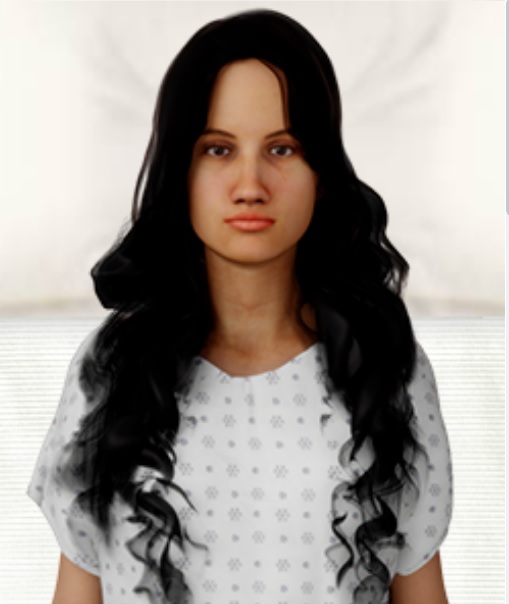Diana Wiseman iHuman Case Summary

Diana Wiseman iHuman Case Summary

Struggling to meet your deadline?
Get your assignment on Diana Wiseman iHuman Case Summary done by certified MDs and PhDs in the USA. ORDER NOW!
Case Summary
Learning objectives
Upon completion of this case, you should have the ability to perform the following:
– Describe the essential components of the diagnostic evaluation (including history, physical examination, and laboratory tests) for patients experiencing irritative-voiding symptoms.
– Enumerate the risk factors associated with urinary tract infections (UTIs).
– List the criteria supporting the necessity of inpatient treatment for severe and/or complicated UTIs.
– Define the range of bacterial organisms responsible for both uncomplicated and complicated UTIs.
– Explain the categories of antimicrobial agents pertinent to the genitourinary system.
Epidemiology
The annual occurrence of pyelonephritis stands at around 0.12% for women undergoing outpatient treatment and 0.03% for women necessitating inpatient care. Young, sexually active women are the most commonly affected group. Infants and the elderly are also at an elevated risk, primarily due to anatomical changes and hormonal factors.
Musculoskeletal Shoshanna Tillman Follow Up Sick Visit Shadow Health Treatment Plan
The annual incidence of pyelonephritis is approximately 0.12% for women receiving outpatient treatment and 0.03% for women requiring inpatient treatment. Young, sexually-active women are most often affected. Infants and the elderly are also at increased risk, reflecting anatomical changes and hormonal status.
Hospital course
In the scenario of an otherwise healthy young woman without diabetes, who could tolerate oral antibiotics, discharge for outpatient treatment after IV hydration might have been considered. This option is viable because the oral and IV forms of fluoroquinolones have equivalent bioavailability. However, our patient’s dehydration and hyperglycemia necessitated IV antibiotics and closer monitoring.
Patient disposition
Ms. Wiseman was released on the third day of her hospital stay, following an uneventful one-day observation period with oral antibiotics. She was scheduled for outpatient follow-up in one week and instructed to complete the full seven-day course of levofloxacin 750 mg PO daily. By the time of discharge, the patient had been on her regular diabetic treatment regimen for several days, resulting in normalized blood sugar levels.
Case Summary
Learning objectives
Following completion of this case, you should be able to perform the following:
- Students can describe the key elements of the diagnostic (history, physical, and laboratory) evaluation of patients with irritative-voiding symptoms
- • Students can list the risk factors for urinary tract infections (UTI)
Students should be able to list the parameters that support the need for inpatient treatment of severe and/or complicated UTI Diana Wiseman iHuman Case Summary
• Students should be able to define the spectrum of causative bacterial organisms in uncomplicated and complicated UTIs
• Students should be able to describe the classes of antimicrobial agents relevant to the genitourinary system
Epidemiology
The annual incidence of pyelonephritis is approximately 0.12% for women receiving outpatient treatment and 0.03% for women requiring inpatient treatment. Young, sexually-active women are most often affected. Infants and the elderly are also at increased risk, reflecting anatomical changes and hormonal status.
The annual incidence of pyelonephritis is approximately 0.12% for women receiving outpatient treatment and 0.03% for women requiring inpatient treatment. Young, sexually-active women are most often affected. Infants and the elderly are also at increased risk, reflecting anatomical changes and hormonal status.
Hospital course
If this were an otherwise healthy young woman without diabetes, and if she had been able to tolerate oral antibiotics, she may have been discharged home for outpatient therapy after IV hydration. This clinical option is available, given that oral and IV bioavailability of fluoroquinolones are equivalent. Our patient’s dehydration and hyperglycemia warranted IV antibiotics and closer monitoring Diana Wiseman iHuman Case Summary.
Patient disposition
Ms. Wiseman was discharged on hospital day 3, following an uncomplicated one-day observation period on oral anfibiotics.
She was scheduled for outpatient follow-up in one week. She was instructed to complete the remaining course of levofloxacin 750 mg PO daily for a full seven days. Diana Wiseman iHuman Case Summary By the time of discharge, the patient had been on her usual diabetic-treatment regimen for several days, with normalized blood sugars.

Dont wait until the last minute.
Provide your requirements and let our native nursing writers deliver your assignments ASAP.